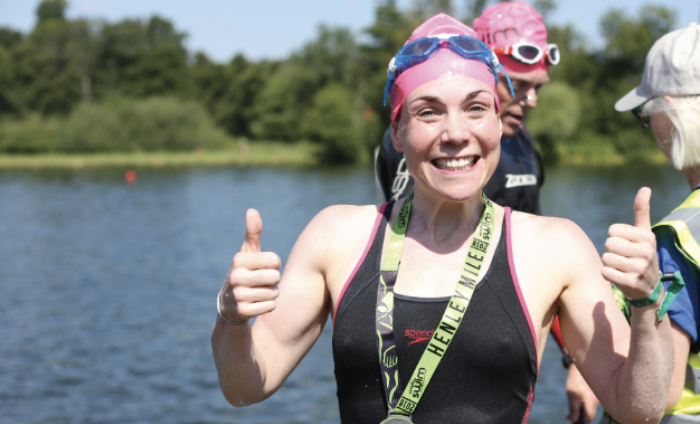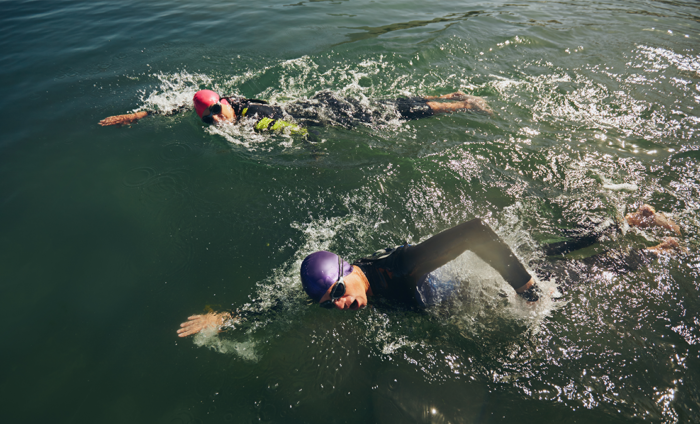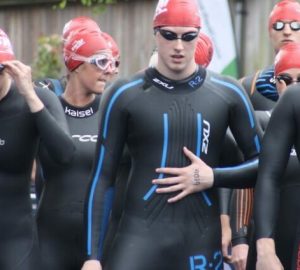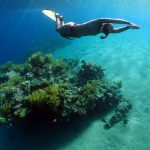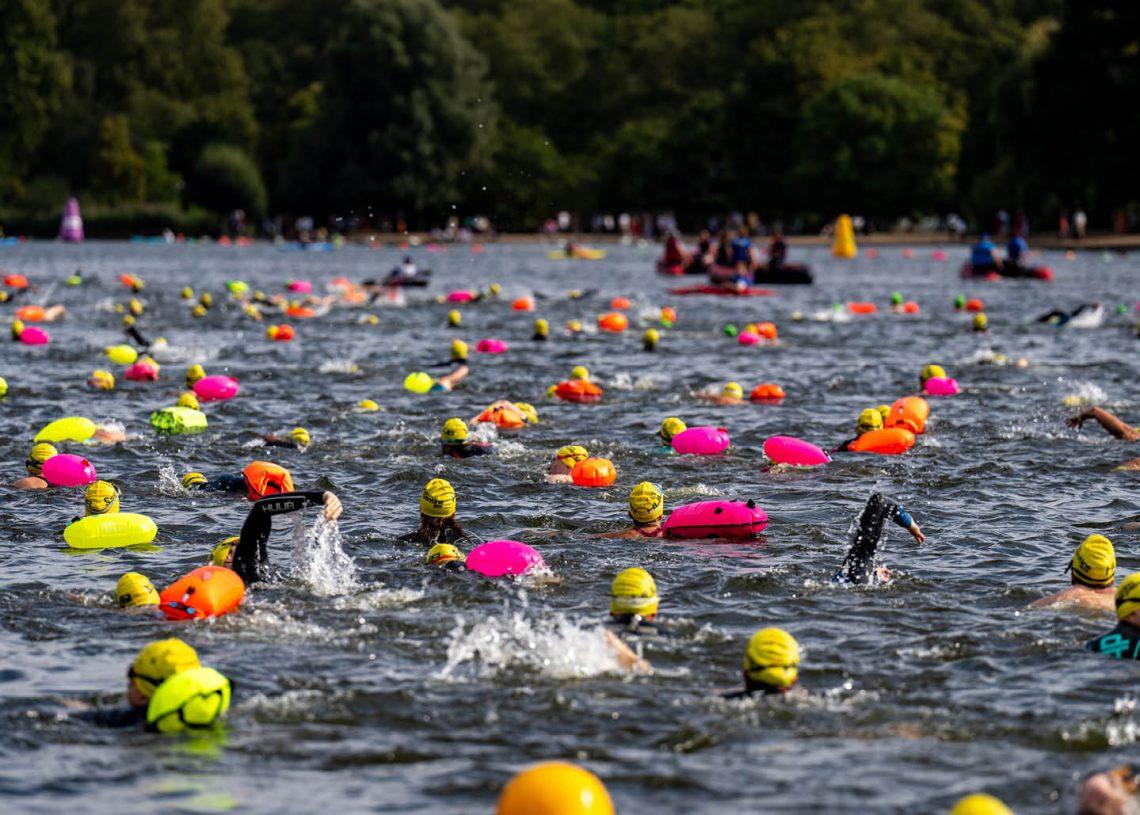
5km open water training plan
If you’re making the move up to 5k this year, follow this training plan devised for you by Fiona Ford
The great thing about having a swimming goal to aim for is the boost it gives to your motivation. To swim your best later this season, it’s important to be consistent in your training through the early part of the year. Having a weekly structure to follow will help keep motivation levels high, build event specific conditioning and develop a repertoire of open water skills
If you’re preparing to move up to the 5k distance for the first time this year, we have put together a set of training sessions to get you started.
These training sessions are suitable if you are targeting swim event distances of 1600m to 5000m. Ideally you are already comfortable swimming for 45-60 minutes three to five times per week. Make these your key sessions each week. Any other swims can either be technique focused sessions or group or club swims. Try to ensure you’re rested before these key sessions.
There are three blocks of sessions for you to follow. Each block of training is intended to last four weeks. In each block there are two “endurance” sessions (to improve your ability to swim the distance) and two “pacing” sessions (to help improve your speed).
You should aim to do one of the endurance sessions and one of the pacing sessions as your key training sessions each week. In addition, try to include an easier training day (for example, where you focus on technique and drills) as active recovery to ensure you can maintain high quality.
You should do each of these sessions twice over a four-week block.
Note that half of these sessions are designed for open water. Depending on the time of year that you start the programme, swimming long distance outside may not be an option. If this is the case, you will have to modify them for pool use. It’s a good idea, even in the pool, to practice sighting, deep water starts and open turns.
For the open water sessions, you may additionally have to adapt to the set-up at your local venue or estimate distances based on swimming time. For example, if the training session is 3 x 500m and the loop length at your venue is 1500m, then estimate roughly where 1/3 and 2/3 of the distance are and take your rests at those points (just float, tread water or switch to easy backstroke or breaststroke). On the other hand, if your lap length is only 400m, then swim the complete lap plus your estimate of a quarter lap. Use buoys or landmarks to help gauge your distance. Similarly, you will have to estimate your pace based on perceived exertion. Remember that if you are wearing a wetsuit, your swim speed may be significantly faster than without. If you can, measure your Critical Swim Speed (CSS – see below for details) in a pool in your wetsuit as well as without. If you have a GPS enabled swimming watch you will be able to check post swim how well you estimated your pacing and distances, but this isn’t essential.
For all sessions complete a warm up of around 800m-1200m and cool down of 200m-400m after the main sets. See below for details.
Pool warm up
1) 2 or 3 sets of 50m, 100m and 150m FC with 15-30 seconds rest between each. Focus on breathing out consistently while your face is in the water.
Or
2) 4 to 8 times 100m FC with 15-30 seconds rest between each. On the first 50m of each, breathe every 5 or 6 strokes and on the second 50m breathe every 3 strokes or try a 3-2-3-2 breathing pattern. Developing breathing versatility is an essential skill for open water swimming.
Open water warm up
Swim 400m to 750m front crawl, building pace from easy to moderate. Work on establishing consistent exhalation concurrently with variety in breathing patterns, based on effort:
- Easy/ aerobic pace – exhale continuously for 4 or 5 strokes.
- Moderate / sub threshold pace – breathe on a sequence of 3-2-3-2 strokes. You should notice how effective this pattern is for navigation, breathing twice to the left and twice to the right and also supporting a higher work rate as you pick up the pace
TRAINING PLAN FOR SWIMS OF 1 MILE TO 5km
BLOCK 1 – WEEKS 1 TO 4
Endurance sessions (do in open water if possible)
Weeks 1 & 3
- 4 to 5 x 400m at endurance pace + 60s recovery after each
Weeks 2 & 4
- 3 x 500m at endurance pace + 60s recovery after each
Weeks 1 & 3
- 10 to 12 x100m at CSS + 15s rest after each 100m
Weeks 2 & 4
- 4 x 200m at CSS + 20-30s rest after each 200m
BLOCK 2 – WEEKS 5 TO 8
Endurance sessions (in open water if possible)
Weeks 5 & 7
- 3 x 1000m or 2 x 1500m at endurance pace (CSS +3-5 sec per 100m) with 1 to 2 minutes rest after each.
Weeks 6 & 8
- 2 to 3 x 1km at endurance pace (CSS + 3-5 sec per 100m)
Pacing sessions (pool-based)
Weeks 5 & 7
- 200m at CSS + 30s rest
- 2x100m at CSS + 15s rest
- 2x50m at CSS +10s rest
- Repeat 3 or 4 times
Weeks 6 & 8
6 x 400m increasing speed as:
- 1 to 3 at endurance pace (CSS +5 sec per 100m) + 60 sec rest after each
- 4 & 5 at tempo pace (CSS +3 sec per 100m) + 60 sec rest after each
- 6 at CSS
BLOCK 3 – WEEKS 9 TO 12
Endurance sessions (open water)
Week 9 & 11
- 4 x 1000m or 3 x 1500m front crawl at endurance pace (CSS +3-5 sec per 100m) with 1 to 2 minutes rest in between
Practise sighting technique and navigation throughout
Weeks 10 & 12
- 5 x 1km front crawl at endurance pace (CSS +3-5 sec per 100m)
Where possible, draft off faster swimmers. Experiment with stroke rate as you work through the set
Pacing sessions (pool-based)
Weeks 9 & 11
6 sets of 400m front crawl, broken as:
- 2x100m at CSS + 15s rest after each
- 4x50m at CSS +10s rest after each
If swimming with a partner, practise drafting on hips and on feet on the 50s.
Weeks 10 & 12
8 x 400m front crawl as follows:
- 1 to 4 at endurance pace (CSS +5 sec per 100m) + 60 sec rest after each
- 5 & 6 at tempo pace (CSS +3 sec per 100m) +60 sec after each
- 7 & 8 at CSS +60 sec rest after each
Cool Down
Remember to ‘cool down’ after every training session. The cool down is a chance to swim slowly, relax and let your heart rate drop. Focus on brilliant technique. Include some backstroke to stretch your shoulders slightly in the opposite direction. Swim about 200 to 400m in total.
Critical Swim Speed and Endurance Pace
Critical Swim Speed or CSS is a concept used by swimming coaches around the world as a basis for determining what speed you should aim to swim at during key training sessions. It is roughly equivalent to the fastest pace you can sustain for a continuous 1500m swim. It is usually measured as your time per 100m, so if it takes you 26m15s to swim 1500m your CSS would be 1m45s per 100m. You can measure your CSS by doing 400m and 200m timed swims.
For more details and a CSS calculator, see: swimsmooth.com/training.html
For the purpose of the training sessions here, calculate your endurance pace by adding 3 to 5 seconds per 100m – so if your CSS is 1m45s, your endurance pace is 1m48s to 1m50s. Aim to swim at this pace during the endurance sessions.
Swim Smooth squad training and video analysis sessions
Triathlon Europe provides weekly Swim Smooth squad training in South West London. The squad enjoy training all year round in fabulous indoor and outdoor 33m pools. Fiona offers swim training plans, 1-2-1 video analysis sessions and stroke correction sessions on weekday mornings and weekend Swim Smooth workshops.
Find out more: triathloneurope.com





